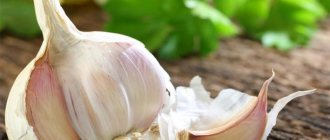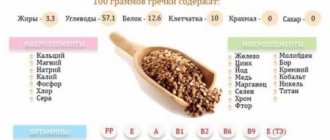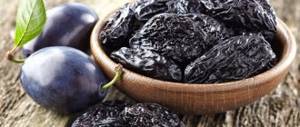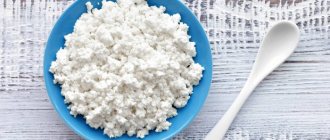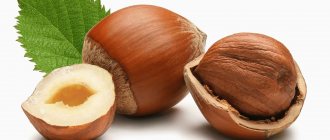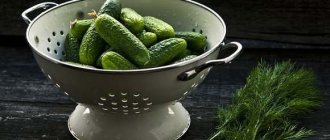Diet for the treatment of gastritis
At the first signs of inflammation in the gastrointestinal tract (nausea, stomach pain, heartburn), patients switch to dietary nutrition to reduce the irritating effect of food on the stomach (intestines). The diet excludes:
- salty, spicy, fatty foods;
- alcohol, cigarettes;
- I write fried food;
- sour and sweet (selected types of juices and fruits, cakes).
The emphasis is on low-fat, light foods - porridge, soups, steamed vegetables.
It is harder to give up sweets (cakes, pastries, sweets, chocolates). People with stomach inflammation are wondering if it is possible to eat chocolate if they have gastritis? Let's find out whether the product contains substances harmful to the digestive system.
Proper diet for gastritis and stomach ulcers
Undoubtedly, proper nutrition plays an important role for successful treatment. As a rule, patients are prescribed a special diet for gastritis and stomach ulcers. Currently, diet number one is followed to treat diseases of the gastrointestinal tract.
Definition of concepts
Gastritis is an inflammation of the gastric mucosa. Peptic ulcer is the formation of erosion in the mucous and muscle layers.
According to its etiology, gastritis is:
- atrophic (occurs in older people and is associated with epithelial atrophy);
- gastritis, which is associated with Helicobacter pylori infection;
- reflux gastritis, in which there is a request of contents from the duodenum into the stomach.
Thanks to the advent of effective drugs, complications of these diseases are much less common. And their exacerbations are treated mainly conservatively.
Basic principles of nutrition for gastritis and ulcers
All foods that a person consumes are divided into strong and weak irritants.
Strong irritants include spices, canned food, pickled vegetables and fruits, stale or overheated food fats, highly acidic dairy products, hard-boiled eggs, and fresh bread.
The list of foods that are mild irritants is as follows: soft-boiled eggs or scrambled eggs, fats, milk, dried bread, cereals, boiled meat, alkaline water, weak tea, pureed vegetables and sweet fruits.
There is also the concept of mechanical sparing. It depends on the consistency of the products and the time of their evacuation from the gastrointestinal tract.
So, a whole piece of meat stays in the stomach longer than a cutlet. Carbohydrates leave the stomach fastest, then proteins. Fats are retained the longest.
The principles of thermal sparing include eating food at room temperature (do not eat too cold or hot).
Despite the ban on many foods, the diet should be varied.
Important! Nutrition during an exacerbation should be selected taking into account the individual characteristics of the human body and the presence of concomitant diseases. Also, the list of foods that are allowed or prohibited depends on the pH of the gastric juice.
Authorized products:
- milk,
- cooked meat,
- vegetables and fruits,
- fish,
- cottage cheese,
- porridge,
- low-fat broths with little salt.
Prohibited products:
- smoked meats,
- sweets,
- pickled vegetables,
- a large number of sour fruits,
- fried food,
- fast food,
- food containing a large amount of seasoning.
Source: //GastroDok.com/pitanie/dieta-pri-gastrite-i-yazve-zheludka.html
What is chocolate
Chocolate is based on cocoa beans, which are initially bitter. To obtain the sweetness, the beans are processed and made into cocoa butter.
For a healthy person, chocolate in moderation is beneficial. The product reduces the risk of cardiovascular diseases and increased blood pressure. It is recommended to consume no more than fifty grams of chocolate per day.
Various fillings are added to chocolate products (nuts, dried apricots, raisins, prunes, berries), sugar, milk powder, and for an attractive appearance and storage - preservatives, stabilizers, and flavorings. Such chocolate will be harmful for gastritis.
Types of chocolate
When a person eats chocolate, the stomach produces more acid (hydrochloric acid), making it easier to digest the fatty and filling product. This should not be allowed in case of illness; excess acid is a provoking factor in gastritis. the caustic secretion corrodes the already inflamed inner lining of the digestive organs.
When the first symptoms of acute gastritis appear (nausea, heartburn, pain), it is better to exclude sweets from the diet.
Chocolate is divided into three types:
Black contains the most caffeine, butter and cocoa powder, less sugar and milk powder. The product tastes bitter. Cocoa content is at least 70 percent.
Milk is the fattest type. The product contains a lot of sugar, milk powder, and caffeine.
White chocolate is a gentle sweet option. The product does not contain caffeine, it contains cocoa powder and special liqueur (chocolate). White is sweeter than other types.
Type of chocolate acceptable for gastritis
Dark chocolate is allowed, including the least amount of fat, sugar, and additives. The stomach reacts to the product calmly, without pain or other unpleasant sensations.
In second place is white chocolate. When consuming, keep in mind that the digestive system will have to cope with a large amount of fat contained in sweets.
The dairy version of chocolate products is prohibited. The product is difficult to digest and contains a lot of sugar and unnatural additives.
It is better to avoid chocolate products with fillings; this is an additional burden on the stomach. Give preference to pure chocolate.
Unfortunately, if a person is diagnosed with inflammation of the inner wall of the digestive organs, such sweets cannot be consumed.
When a patient with gastritis wants chocolate and does not have the strength to refuse, it is possible to eat a slice of bitter or white sweetness, taking into account the state of health, doctor’s recommendations, dietary restrictions, and the body’s reaction to a certain type. Relaxation is permitted when the disease is in remission, in the absence of exacerbations. If you experience negative sensations (pain or heaviness in the stomach, heartburn, nausea), you should immediately exclude chocolate from your diet.
Other sweets
Patients with gastritis should not be upset by the ban on eating chocolate products. Cooks have invented many tasty and healthy substitutes. Before buying sweets, look at the fat content. Fatty foods are difficult to digest and cause stomach pain.
For patients suffering from gastritis (acute and chronic forms), it is allowed to consume sweets:
- Pastila, marshmallows. The products are made without the addition of harmful unnatural substances and do not irritate the inner lining of the stomach.
- Certain types of sweets (toffee, caramel) in limited quantities.
- Marmalade based on natural ingredients.
- Jam or marmalade - it is better to choose non-acidic options, since if you have gastritis, too acidic food is undesirable.
- Natural honey contains many vitamins and strengthens the immune system.
- Fruit jelly - it is desirable that the sweetness is sweet or sweet and sour.
- Dried fruits contain a lot of vitamins that are beneficial for the body and immunity.
Many of the sweets are easy to prepare yourself, making the products natural and healthy.
Inflammation of the mucous membrane of the digestive organs is a common unpleasant disease. The main condition for cure is following a diet. Often the diet for gastritis excludes chocolate products.
Chocolate is undesirable for gastritis due to the presence of sugar, caffeine, and artificial additives that are difficult to digest in the digestive tract. One or two slices of dark or white chocolate are allowed, but only during remission of the disease. Monitor the body’s reaction; if you experience negative symptoms, remove the product from your diet and replace it with other sweets.
source
Is it possible to have chocolate for gastritis?
It is not recommended to consume chocolate for gastritis, as it is made from cocoa beans with the addition of not always healthy ingredients to give it a rich taste. First of all, a large amount of sugar and milk are added to chocolate, which makes it even fatter and gives it a delicate creamy taste, as well as additives such as flavoring agents, dyes, and roasted nuts. Scientists have found that eating any product containing chocolate is addictive.
Another reason why you can’t eat chocolate if you have gastritis is vegetable fats and flavorings that irritate the walls of the stomach, which are already inflamed with gastritis. To digest chocolate, gastric juice is produced, which increases the acidity of the stomach and provokes pain, burning and discomfort in the stomach.
Chocolate is indeed a beneficial product for our health if consumed in moderation. Research by scientists has shown that one piece of chocolate a day can lower blood pressure and reduce the risk of heart disease. Scientists also suggest that dark chocolate is healthier than milk or white chocolate, since it contains more cocoa beans.
Is it possible to eat chocolate with acute gastritis?
Acute gastritis is the rapid development of an inflammatory process in the stomach and is accompanied by severe pain. With proper treatment and a strict diet, the exacerbation subsides in about a week. But if you continue to not be careful or ignore treatment, it can develop into a chronic form. Chocolate is strictly forbidden if you have an exacerbation of the disease. This is a very difficult product to digest, and if you eat even a little, you can provoke a severe attack of pain, nausea, vomiting and worsening of the condition.
Chocolate for gastritis
Cocoa processing products contain a lot of vegetable fats that are difficult for the stomach to digest. In addition to fats, cocoa beans contain about 300 microelements. Some of these elements cause a stimulating effect. Especially theobromine and caffeine stimulate appetite and cause the secretion of gastric juice. In general, it should be noted that this product is not dietary.
In some cases, with gastritis, chocolate in small doses will not have a negative effect on the stomach
Types of chocolate, their composition and effect on the body:
- dark (bitter chocolate): contains the maximum amount of cocoa butter (up to 99%) and a minimum of other products;
- white: contains almost no cocoa bean derivatives. Made from milk powder, sugar and vanillin;
- milk: its base is milk powder, powder and grated cocoa;
- diabetic: sugar is replaced with diabetic analogues;
- vegan: animal milk is replaced with soy coconut milk, etc.
There is no optimal option when choosing between these types of chocolate. Dairy products for gastritis are excluded immediately, as they accelerate the fermentation process, thereby irritating the gastric mucosa.
In some cases, chocolate in small doses will not have a negative effect. If after taking a small amount (50 grams per day) of black or vegan (without animal products) chocolate, heaviness, heartburn and other symptoms of gastritis are not observed, then the intake can be repeated over time. If desired, it is allowed to be consumed in liquid form, but in advanced forms of gastritis, only at your own peril and risk.
What sweets can you have if you have a stomach ulcer: sugar, sweets, jam, cookies, ice cream, marshmallows?
Nutritionists conditionally divide the food basket of a person with a gastrointestinal tract disease into several groups, one of which is sweets for stomach ulcers.
Quickly digestible carbohydrates, which include refined sugar and products containing it, are limited in therapeutic dietary nutrition. We’ll talk about what delicacies can be included in a patient’s diet, and what is strictly prohibited, in this article.
What's for sweets if you have a stomach ulcer?
Sweets classified as high-calorie confectionery products do not represent biological nutritional value for the body, since on average they consist of refined sugar at 80%.
Sugar for stomach ulcers is allowed in the patient’s diet in limited quantities for a number of reasons:
- A purified sweet product absorbs the maximum amount of B vitamins from the body, and the inflamed gastric mucosa already prevents the full absorption of nutrients. That is, by consuming sugar unlimitedly, the patient aggravates the situation, which will lead to serious vitamin deficiencies.
- When consuming chocolates with a stomach ulcer, the patient often experiences irritable stomach syndrome. Simple sugars can increase peristalsis, cause heartburn, vomiting on an empty stomach, and pain in the epigastric region.
- Bed rest and consumption of sweets can lead to excess weight gain.
Answering the question: is it possible to eat chocolate if you have an ulcer, gastroenterologists do not give a definite answer, commenting on the information as follows:
- Chocolate for stomach ulcers during an exacerbation are prohibited foods that are difficult to digest and increase the secretion of gastric juice, causing pain due to irritation of the mucous membrane.
- Sweets contain a number of substances (preservatives, thickeners, dyes and others) that adversely affect the mucous membrane of the organ. Therefore, sweets for stomach ulcers, which include chocolate, fillings in the form of puffed rice, liqueurs, fruits, and nuts, are prohibited. During the period of remission, you are allowed to enjoy one or two creamy caramels or sweets like Korovka during the day.
- Is it possible to have chocolate for an ulcer during remission? 50 grams of black delicacy without flavorings and food additives in the form of nuts, raisins, seeds, and fruits are allowed to be consumed daily. White and milk chocolate are prohibited even outside of an exacerbation of the disease.
Can you eat marshmallows if you have an ulcer?
Pastila, marmalade, marshmallows are sweets that can be included in the diet.
These confectionery products do not contain vegetable or animal fats, which makes them easily digestible and low in calories. In addition, one of the components acting as a gelling agent is beneficial for health:
- Pectin is a natural plant substance used to gel marshmallows, which has an antiulcer and antiviral effect that improves the functioning of the gastrointestinal tract. Pectin is able to neutralize metal salts and radionuclides and remove them from the body.
- Agar is a substance obtained from red seaweed. In the confectionery industry it is used to produce a gelatinous consistency of such sweets as marshmallows, marmalade, and marshmallows. For ulcers, agar-agar normalizes the function of digestion, thyroid gland, and liver. The microelements calcium, iodine, copper, iron and vitamins E, B5, K contained in the vegetable thickener are necessary for the body.
- Gelatin is a substance made from the tendons and bones of animals. Marshmallows with a gelatin base for stomach ulcers should be consumed with caution. It has significantly more calories than the above samples.
Which marshmallow should you prefer if you have a stomach problem? The airy delicacy of white or creamy yellow color definitely does not contain dyes, so it can safely serve as a dessert. Marshmallows coated with dark dark chocolate are allowed into the diet in limited quantities and only during a period of stable remission.
Jam, ice cream, cookies for stomach ulcers
If you have a stomach ulcer, jam and confectionery flour products can be included in the patient’s diet, provided:
- Jams and preserves have a mildly sour taste;
- Cookies for ulcers should contain a minimum amount of fat. Food additives and flavorings are not allowed in flour products;
Eating chocolate for gastritis
For patients with a history of gastritis or other pathologies of the digestive system, chocolate is strictly prohibited. Contraindications are related to the characteristics of the disease and the body’s reactions to the active ingredients included in the product.
There is a common misconception among patients that only bitter varieties are prohibited, while milky and white varieties are allowed in small quantities. Let's look at each type of chocolate for gastritis.
White chocolate – it does not contain caffeine, the main share is made up of vegetable fats (palm oil, etc.). This chocolate ranks one of the highest in fat content among all types. There are no beneficial qualities noted in it.
Milk chocolate – includes a large percentage of milk powder, increasing its fat content. Patients with all forms of gastritis are prohibited from any fatty foods - they negatively affect the gastric mucosa. Low caffeine content is also contraindicated in this group of patients.
For patients with a history of gastritis or other pathologies of the digestive system, chocolate is strictly prohibited
Dark chocolate is one of the healthiest due to the minimal amount of additives and flavoring fillers, but the maximum doses of caffeine make its use prohibited for patients with damage to the gastrointestinal mucosa. Sweet bars - made exclusively from substitutes and flavorings, are considered harmful not only for patients with gastritis, but also for healthy people. Such “sweets” are strictly prohibited for children.
The main components that make up chocolate make it unsuitable for the intended type of diet - for diseases of the digestive tract. Ideal analogues that can replace real chocolate have not yet been invented - patients have to switch to permitted treats or completely exclude them from the diet.
Is it possible to eat chocolate if you have gastritis or not?
High-quality chocolate contains exclusively natural ingredients. The base of the natural confectionery product includes cocoa butter, cocoa beans and sugar. If we talk about white and dairy products, the composition of these sweets changes somewhat, since it is replenished with a new ingredient - dry milk. Low-quality chocolate is becoming more and more common on store shelves.
So is it possible to eat chocolate if you have gastritis? If we talk about chronic gastritis, then a confectionery product made from cocoa beans can be included in your diet, provided there is no inflammation of the gastric mucosa. If the symptoms of the disease do not bother the patient, he can try a couple of shares of dark chocolate and observe the reaction of his body.
A huge plus of white chocolate is that it contains no caffeine.
In case of acute exacerbation of the gastric mucosa, consuming sweets is strictly not recommended, since it activates the production of hydrochloric acid. The composition of the confectionery product is to blame: too fatty cocoa butter, as well as an excessive amount of caffeine.
White chocolate for gastritis
A huge advantage of white chocolate is that it contains no caffeine. This is why white chocolate is less irritating to the gastric mucosa. One cannot ignore the fact that the delicacy contains an excessive amount of vegetable fats, which can provoke an inflammatory process in the gastrointestinal tract in that category of people who are included in the so-called risk group.
Plus, unscrupulous manufacturers replace some of the expensive cocoa butter with cheaper analogues. For example, palm oil. The benefits of such a product are practically reduced to zero, so consuming such chocolate for gastritis in any form is definitely not worth it.
Dark chocolate for gastritis
When producing black delicacies, I use the maximum amount of cocoa products. Slightly bitter and very aromatic, dark chocolate appeals to many people with a sweet tooth. In addition, it is a leader among confectionery products in terms of the amount of useful vitamins and minerals (provided the “correct” composition is present).
By consuming a couple of pieces of chocolate, a person suffering from gastritis can provoke the production of hydrochloric acid, which is fraught with consequences.
It is possible, and even necessary, to consume a few shares of dark chocolate during the period of remission of the disease. After all, those with a sweet tooth probably know that chocolate improves their mood.
Milk chocolate for gastritis
Despite the taste of the confectionery product, it cannot be called healthy at all. It contains a minimal amount of cocoa, but there is an excess of vegetable fats and sugar. By consuming a couple of pieces of chocolate, a person suffering from gastritis can provoke the production of hydrochloric acid, which is fraught with consequences.
Eating chocolate for gastritis with high acidity is dangerous. The consequences can be the most unpredictable: from disruption of the proper functioning of the digestive processes, to the appearance of severe pain, which is caused by spastic contractions of the stomach.
What products can replace chocolate?
Since it is not advisable to eat chocolate if you have gastritis, but you really want to eat something sweet, you can pay attention to the following desserts:
- caramel;
- natural honey;
- toffee;
- paste;
- jelly;
- marmalade;
- marshmallows;
- non-sour jam or preserves.
You should choose a treat for pathologies of the digestive canal carefully, especially with regard to the calorie content of the product. The fat content should be very low. And the amount of sugar in dessert should be as small as possible.
The optimal substitute for chocolate is marshmallows and marshmallows; they are made from natural ingredients and do not irritate the gastric mucosa.
If you need to find a substitute for dark chocolate, then vanilla cake is quite suitable.
To neutralize hydrochloric acid and reduce the level of acidity in the stomach, it is recommended to use dairy products, in particular yogurt or skim milk.
What kind of chocolate is good for gastritis?
Gastroenterologists do not recommend chocolate for gastritis. You can eat chocolate in different ways - there are its varieties, several types, different types of chocolate; in case of gastritis, they probably do not all affect the disease.
Maybe a little white - white chocolate doesn't contain cocoa powder, does it? White chocolate does not actually contain cocoa powder or caffeine, but it does contain a lot of cocoa butter, which is a very fatty product, a lot of sugar and other components, and they are very difficult to digest, which is harmful to a sick stomach.
Milk chocolate is probably the most inappropriate for this disease. It contains cocoa butter, cocoa powder, sugar, and fatty milk powder - an absolutely killer cocktail for gastritis. Due to vegetable fats and other components, milk chocolate is quite dangerous. Their content has a bad effect on gastritis. And dark chocolate is also prohibited, especially the bitter variety. It has a minimal sugar content and no milk powder, but a high proportion of cocoa powder and a considerable amount of caffeine, while it is better to exclude caffeine altogether.
The maximum you can afford is 1-2 slices during long-term remission. And you should introduce chocolate into your diet very carefully, one small piece at a time. The same applies to eating chocolates. Due to the variety of fillings, their influence can be even more detrimental - gastritis often reacts violently to their content. You will also have to exclude chocolate bars.
Composition and beneficial properties
Chocolate is a sweet dessert made from cocoa beans. From this product, valuable cocoa butter and cocoa mass are obtained, which are its key components. Cocoa beans themselves are not edible: they are bitter and unpleasant to the taste.
Expert opinion
Irina Vasilievna
Practicing gastroenterologist
Among gourmets, the most valuable is chocolate, where the percentage of cocoa liquor is the highest in the bulk of the product. In addition, the sweets include: sugar/powdered sugar, milk powder, vegetable fats.
Also, flavorings are often added to improve taste, and preservatives are added to increase shelf life. Manufacturers of inexpensive brands, to reduce costs, replace a certain percentage of cocoa butter with trans fats.
By adding milk powder or cream, milk chocolate is obtained: the most nutritious and high in fat. White chocolate does not contain cocoa butter , but is saturated with vegetable fats.
Chocolate is a high-calorie product. Therefore, it is contraindicated for people who are obese , and due to its high sugar content, for people with diabetes.
| Product | Calorie content per 100 g, Kcal | Proteins per 100 g. | Fats per 100 gr. | Carbohydrates per 100 g. |
| Dark chocolate | 546 | 4,9 | 30,2 | 61 |
| Milk chocolate | 550 | 6,9 | 35,7 | 54,4 |
| bitter chocolate | 539 | 6,2 | 35,4 | 48,2 |
| White chocolate | 541 | 4,2 | 30,4 | 62,2 |
It also contains vitamins A, B1, B2, E and PP and macroelements: potassium, calcium, iron, sodium, phosphorus.
On our website: Apples for gastritis - is it possible or not?
There are special types of chocolate:
- vegetarian - does not contain cow's milk, it is replaced with rice, soy, almond milk;
- diabetic - sugar in the composition is replaced by sweeteners: stevia, xylitol, sorbitol, mannitol, isomalt.
Is dark chocolate allowed for gastritis?
As vegetable fats and food additives enter the stomach along with chocolate, irritation of the stomach walls occurs. But in the case of gastritis, they are already inflamed. In addition, in order to digest such a heavy product as chocolate, the process of producing gastric juice is activated. All this ultimately leads to a sharp jump in stomach acidity, which leads to not only discomfort, but also pain in the stomach area.
Only in rare cases, on an individual basis, can the attending physician allow the patient minimal consumption of dark chocolate for gastritis. After all, natural dark chocolate, among its other varieties, will be the least dangerous. This becomes possible upon the onset of stable remission, when acute symptoms do not remind of themselves for long periods of time.
In order to achieve stable remission and allow yourself a little dark chocolate for gastritis, of course, if this product does not cause an allergic reaction in the body, it is necessary, after discovering this disease, to strictly adhere to all the basic recommendations of a therapeutic diet. It involves the exclusion of fried and fatty foods, as well as hot salty and spicy foods. You will have to eat often, but little by little, to minimize the load on your inflamed stomach.
Chocolate for gastritis with high and low acidity
Chocolate is a rather difficult delicacy to digest, the consumption of which is only allowed for practically healthy people. It contains a large amount of fat, caffeine and sugar, so it is unacceptable to eat it every day even with stable remission. During illness, sweets should be replaced with low-fat milk and yogurt.
These products help neutralize high acidity. Those who cannot exist without dessert should know: eating chocolate for gastritis during an exacerbation is prohibited, but some types are acceptable in small quantities during remission. Is it possible to have chocolate for gastritis with high acidity? No, because after eating chocolate you may experience symptoms such as: nausea, vomiting; heaviness in the stomach; heartburn; pain in the stomach.
The ban also applies to hot chocolate, since it is also made from grated cocoa. Its effect is similar to that of chocolate bars: increased acidity and irritation of the gastric mucosa.
The ban on gastritis also applies to hot chocolate, since it is also made from grated cocoa.
It is better to replace this drink with chicory, but in no case with coffee. During the period of remission, this sweetness can be included in the menu, but limit it to a small slice. After this, it is necessary to monitor the body’s reaction; in case of any negative consequences, chocolate will have to be excluded.
The simpler the composition of a chocolate bar, the more healthy and harmless it is. However, it should be remembered that for a healthy person the daily intake of chocolate is only 50 grams. Therefore, if you have problems with the gastrointestinal tract, you can use it very, very limited. Unfortunately, there is no special chocolate for patients with gastritis.
If you have gastritis with low acidity, you should not eat chocolate. When using it, the following appear:
- bowel disorder (diarrhea or constipation);
- heaviness in the stomach;
- feeling of weakness throughout the body;
- dizziness;
- pale skin;
- dry mouth or increased salivation;
- the appearance of a white coating on the tongue.
How to eat for people with gastritis and ulcers
Compliance with a well-structured diet is the most effective and reliable method of treating gastritis and gastric ulcers, along with the mandatory intake of medications.
Gentle nutrition, excluding the consumption of foods that stimulate the secretion of secretions from the digestive tract, allows you to achieve positive dynamics, reduce inflammation and speed up recovery.
People with gastritis and stomach ulcers should adjust their diet and follow some rules
A diet for gastritis and stomach ulcers does not at all imply a categorical refusal of many tasty and nutritious dishes. You just need to follow the basic rules of gentle nutrition, choose healthy and fresh foods and, of course, know how to prepare them correctly.
Basic principles of nutrition
Against the background of almost all diseases of the digestive tract, patients are prescribed a gentle diet, following which completely excludes the consumption of certain foods and dishes. In addition, it is necessary to follow a number of important rules regarding the diet and culture of nutrition for gastritis and stomach ulcers. The main and most important principles are considered to be:
- You can only eat dishes prepared using methods such as boiling, stewing, and baking in special bags. You can use a multicooker, in which case the food not only retains all the beneficial substances and microelements, but also acquires excellent taste.
When choosing foods, you should consider their calorie content
- One of the main principles is fractional nutrition. It is recommended to eat often enough; the maximum break between meals should not exceed three hours. This method allows not only to normalize digestion, but also to improve metabolism in general.
- Don't forget about the calorie content of foods. The optimal amount of calories that a person leading an active lifestyle should consume is about 2,500. In the absence of physical activity, this norm can be significantly reduced. To determine the optimal amount of energy value required in a particular individual case, it is advisable to consult your doctor.
- The temperature of food eaten should not be too high or hot, otherwise there is a risk of irritation of the gastric mucosa.
With gastritis with an ulcer, nutrition should always be complete, therefore, various snacks on the go should be avoided
- It is recommended to avoid eating foods containing large amounts of salt. You should also reduce its amount in the diet, replacing regular table salt with sea salt.
- It is necessary to forget about eating “on the run” and in a hurry. Each meal should be a kind of ritual, requiring careful chewing of each piece and mandatory rest after eating. Following this simple rule will allow the body to better absorb the nutrients contained in the foods you eat.
Important! It is advisable to follow the basic principles of nutrition not only in the presence of diseases of the digestive tract, but also as preventive measures. Timely adjustments to your daily routine and diet will help you avoid many digestive problems in the future.
Authorized Products
Currently, all kinds of diseases and pathologies of the digestive system are considered to be the most common. Significant and minor deviations from the norm are detected in almost every second representative of the population, which is due to systematic violation of the basic rules and norms of nutrition.
When choosing foods and dishes, you need to remember that they should have a positive effect on the gastric mucosa
For gastritis in any form and ulcers of the stomach and duodenum, you should give up many very tasty, but very harmful foods. This is due to the fact that they have a negative effect on the mucous tissues of the digestive organs, provoking an increase in foci of inflammation.
Proper nutrition for stomach ulcers, as well as gastritis, involves eating only the dishes listed in the list below:
- Vegetables. You can eat almost all types of vegetables, with the exception of those whose composition is enriched with a large amount of fiber; for example, white cabbage should be excluded. In addition, we should not forget that vegetables can only be consumed after heat treatment; they cannot be eaten fresh. You can cook almost anything, but the most useful types of dishes are: stews, pureed soups, steamed vegetable cutlets with the addition of cereals.
For ulcers with gastritis, most vegetables are allowed
- Porridge. It is advisable to cook them in water, without adding whole milk. To add a pleasant taste, you can add a little honey, cinnamon or vegetable oil to the finished dish. The consistency of porridges should be moderately liquid and viscous; in this case, the food gently envelops the mucous tissues of the stomach, protecting them from the aggressive effects of acids and reducing inflammation.
- Meat. Animal protein is an integral part of a proper diet. But in the presence of diseases such as stomach ulcers, ulcerative gastritis and others, it is worth giving preference to low-fat and lean varieties of meat. You can eat veal, poultry, beef. It is advisable to exclude pork completely. Based on meat, it is recommended to prepare pates, stews, meatballs, steamed cutlets, as well as homemade sausage without adding salt and spices.
- Fish. Fatty acids, which sea fish contains in large quantities, help restore metabolism and normalize the functioning of the digestive tract. Fish can be cooked in absolutely any way, with the exception of deep-frying and frying.
Cooking porridge is allowed only in water, without the use of milk.
- Fruits. If you have diseases of the digestive system, you should not eat fresh fruits, as the acids they contain can aggravate the disease and provoke an exacerbation of inflammatory processes. But various fruit soufflés, marshmallows, and casseroles can be an excellent dessert. But instead of sugar, it is better to add a little honey to sweet dishes.
- Milk products. For gastritis and gastric ulcers, whole milk can be consumed only in minimal quantities. It is better to give preference to products included in the following list: yoghurts, kefir, fresh homemade yogurt, sour cream, fermented baked milk, low-fat cottage cheese.
Important! The list of foods that can be eaten for gastritis and gastric ulcers may vary somewhat, depending on the stage of development of the disease and other cumulative factors. In order to avoid possible complications, you should consult a doctor to more accurately determine the list of products allowed for consumption.
Prohibited Products
For pathologies of the digestive tract, it is recommended to completely avoid foods that activate the secretion of gastric juice, impair digestion, and also irritate mucous tissues.
People with gastritis and ulcers should avoid drinking carbonated drinks
If you have gastritis, as well as peptic ulcers, you should absolutely not eat foods such as:
- semi-finished products, ready to eat;
- rich broths based on fatty meats and fish;
- carbonated drinks and packaged juices;
- any legumes;
- bakery products;
- hot seasonings and fresh herbs;
- eggs, including quail;
- canned food, smoked meats, marinades, pickles;
- sweets, chocolate, coffee, cocoa.
Baking is banned
Advice! In addition, we should not forget that any therapy for diseases of the digestive tract implies a complete cessation of all bad habits, including not only drinking alcohol, but also smoking.
Example menu
In order to reduce inflammation and normalize the functioning of the digestive tract, patients with diagnoses such as gastritis and gastric ulcers are advised not only to know what they should not eat, but also to plan their diet in advance. The menu for the week, as well as for the day, should include dishes that do not create unnecessary stress on digestion and provide the body with nutrients and beneficial microelements.
Below are dishes that are recommended for consumption in case of pathologies of the digestive system. When creating a menu, you can vary them throughout the week.
If you have a peptic ulcer, you can use jelly
Monday Tuesday
- Breakfast. Oatmeal with the addition of a small amount of natural honey and dried fruits, a rosehip drink without sugar, or jelly is a drink that can be consumed even in the acute stage.
- Lunch. Casserole made from fruits, cottage cheese and cereals.
- Dinner.
Meatball soup based on vegetable broth, a small piece of whole grain bread, or day-old white bread. Compote or jelly. - Afternoon snack. Puree any vegetables and a small amount of minced meat.
- Dinner. Turkey, potato and tomato stew, herbal tea.
- Second dinner.
A glass of kefir.
Wednesday Thursday
- Breakfast. Sticky rice porridge, boiled to the consistency of jelly, herbal tea.
- Lunch. Two slices of stale bread, two pieces of low-fat cheese, compote.
You can use hard pasta to make the casserole.
- Dinner. Fish soup with potatoes, beet salad, jelly.
- Afternoon snack. Apples baked with honey.
- Dinner. Casserole of durum pasta and a small amount of cheese.
- Second dinner. A glass of curdled milk.
Friday Saturday
- Breakfast. Oatmeal with vegetable oil and dried fruits, compote.
- Lunch. Fresh low-fat cheese, whole grain bread.
- Dinner. Sauerkraut cabbage soup, stewed vegetables, jelly.
- Afternoon snack. Cheese casserole.
- Dinner. Steamed cutlets, carrots stewed in milk, herbal tea.
- Second dinner. Yogurt.
Oatmeal with dried fruits is perfect for breakfast with gastritis and ulcers



